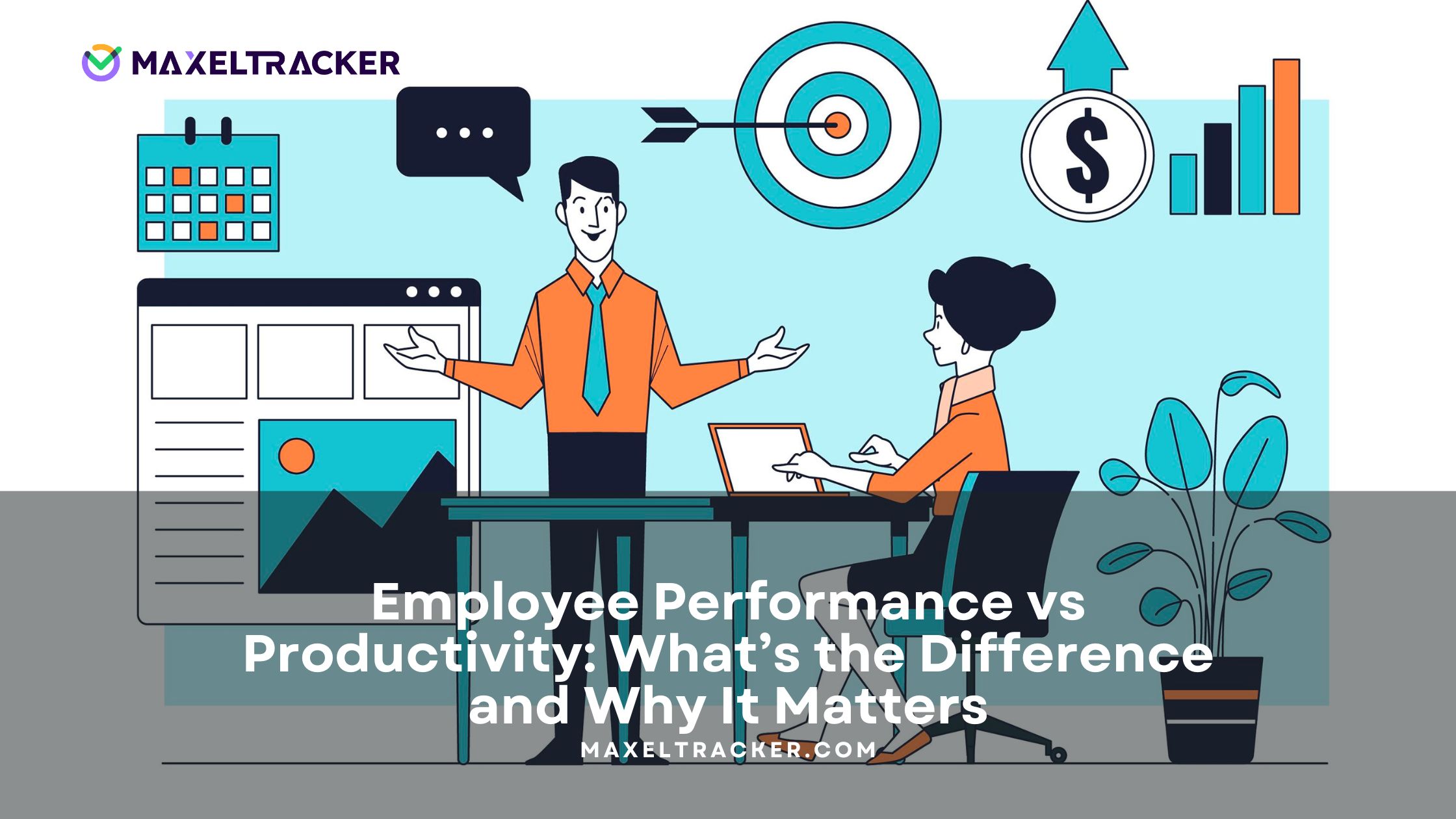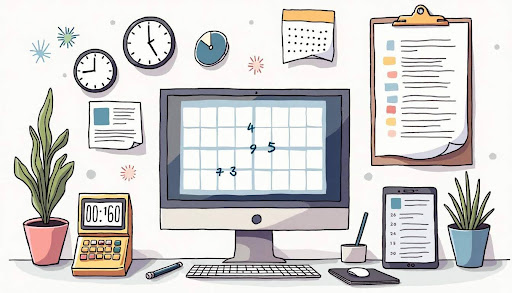Employee Performance vs. Productivity: What’s the Difference and Why It Matters

Strong 8k brings an ultra-HD IPTV experience to your living room and your pocket.
Understanding how employees contribute to work is key for any business. Two terms often used are performance and productivity. While they sound similar, they mean different things. Knowing the difference can help companies manage their teams more effectively, track progress fairly, and achieve business goals more quickly.
This guide will explain what employee performance is, how it differs from productivity, and which tools can help you measure both. We’ll also cover tips to improve each, with clear, simple steps anyone can follow.
What Is Employee Performance?
Employee performance is about how well a person does their job. It includes the quality of work, how well goals are met, behaviour, problem-solving, and how they help their team.
Performance is often measured using metrics, like:
- Sales numbers
- Project completion rates
- Customer feedback
- Goal completion
These results show whether an employee is productive, not just busy. Someone with high performance meets goals, adds value, and supports company success.
Performance is often reviewed during employee evaluations or regular check-ins. This helps identify top performers who can be appraised for their work, and those who may need more support and training.
What Is Employee Productivity?
Productivity is about how much work someone does in a set amount of time. It looks at how fast or how many tasks an employee finishes.
- Examples of productivity metrics include:
- Number of sales
- Projects/Tasks completed
- Total billable hours
- Time spent on tools or apps
However, being productive doesn't always mean the work is done well. For example, someone might finish five tasks fast but make multiple mistakes, or it may take more time to complete those tasks. That's why both need to be tracked together.
Key Differences Between Performance and Productivity
Although performance and productivity are closely related to each other, they measure very different aspects. Understanding the key differences helps companies make informed decisions. This helps manage employee evaluations, setting goals, and selecting tracking tools. Here’s a breakdown:
Performance tells you how well the job is done. It is about the quality of output and whether employees are meeting the company’s goals and expectations.
Productivity tells you how much work is being done. It mainly focused on the speed and volume of work completed within a certain timeframe.
For example, a highly productive employee might complete dozens of tasks in a day, but if the tasks are not up to the mark or inaccurate, their performance is still low. On the other hand, a worker might complete fewer tasks but execute them flawlessly. It shows high performance but lower productivity.
But the fact is, both are critical. A strong team balances efficiency(getting a lot done) with effectiveness (doing it well). Businesses that measure and improve both aspects are more likely to retain top talent, deliver the best results, and grow faster.
Why This Difference Matters for Companies
Companies play a critical role in setting expectations, tracking progress, and driving results. To do that effectively, they need to understand the difference between employee performance and productivity. Paying attention to just one side can lead to misjudgments and missed opportunities.
Check below how knowing the difference helps companies lead better:
1. Fair Evaluations
In many cases, productivity is the first thing that gets noticed. Like how many hours an employee works, and the number of tasks they completed. While these digits are helpful, they don’t always show the real truth. A worker might seem busy but deliver weak results.
That is where performance adds depth. It measures how well tasks are completed, and not just how many. This creates a more complete view and helps managers recognize true contributions, not just busywork.
2. Better Feedback
Feedback should be clear and based on facts. Without any doubt, productivity is crucial, but so is the approach and quality of the work being done. Knowing the difference helps companies focus on work speed and work quality, too, and helps employees grow.
3. Improved Team Planning
To hit deadlines, you need productive teams. But to win customer trust or finish key projects, you also need high performers. For this, companies need to understand who is best suited for different types of work. For example, some workers may be good in fast-paced environments where quick output matters. Others may excel in roles that require deep thinking, creativity, or attention to detail.
By tracking both, companies can build teams with the right mix of skills. This leads to stronger and better collaboration.
4. Smarter Goal Setting
When goals focus only on numbers, like completing “x” tasks a day, employees may feel pressure to rush. This can affect their quality of work. But when organizations also consider performance, they can set more balanced and realistic goals. This includes quality standards and output expectations.
This helps in improving the results and helps workers understand what success really looks like in their roles.
How to Measure Employee Performance
Measuring performance goes beyond tracking results. It is about understanding how employees contribute to team goals, projects, and outcomes. Using a structured approach and the right tools, MaxelTracker’s employee productivity tracking software, this process becomes easier, more objective, and more meaningful.
Here are a few widely used methods to measure performance effectively:
Set Clear Goals for Each Role
Begin by defining what success looks like. Use SMART goals (Specific, Measurable, Achievable, Relevant, Time-bound) for each role. It ensures workers have a clear understanding of their responsibilities and expectations. With this clarity, organizations can analyze progress fairly and consistently across individuals and teams.
Blend of Self-Reviews with Manager Feedback
A well-rounded evaluation includes both perspectives. It motivates workers to reflect on their work, along with the review from their managers. This also encourages open communication and helps surface challenges or strengths that might not be visible daily.
Many modern platforms make it simple to collect and organize feedback from both sides. It also leads to more productive performance conversations.
Real-Time Feedback During Feedback
Feedback is most effective when it's timely. Waiting for the feedback until the end of the quarter or a formal review cycle can slow down growth. This also leads to missed opportunities for quick improvements.
Instead, offering insights and coaching throughout the project keeps employees aligned and motivated. Even short, informal check-ins can build trust and show that progress is being noticed.
Rating Scales and Comments
While performance scales (like 1–5 ratings) are useful for structuring evaluations, they’re most effective when paired with context. Adding comments helps explain the “why” behind the score. This gives employees clear examples of what they’re doing well and where they can improve.
For example, instead of simply rating "communication" a 4, a manager might write: “Effectively communicates with stakeholders during weekly check-ins and project handovers.”
Track Progress Visually with Dashboards
Many performance tools include dashboards that summarize progress across goals, competencies, and feedback. These visuals help both companies and employees see patterns over time. This includes improvements in project delivery, consistency in results, and areas that need more support.
Are you looking for such tools? MaxelTracker can be your choice. It offers these kinds of features, helping teams stay aligned and informed without having to dig through spreadsheets or reports.
How to Measure Productivity
Productivity is about how effectively employees use their time to complete tasks and meet goals. Measuring it helps teams stay efficient, spot workflow issues early, and improve how work gets done across the board.
Below are the simple ways to track productivity:
Task Tracking: Tracking the task progress, when tasks start, how long they take, and when they’re completed. It can reveal work patterns and help identify slowdowns.
Time Logs: Recording the number of hours worked each day, along with what those hours are spent on. Time logs are especially useful for knowing output during remote or hybrid work.
App and Web Usage: This helps to monitor whether time is spent on meaningful tasks vs. distractions. The right tool will capture the data in the background without disrupting workflows.
Output Reports: Tracking what’s getting done, like reports completed, client tickets resolved, or documents submitted. This gives a measurable sense of work volume.
Project-Based Measurement: Comparing estimated vs. actual time spent on projects shows whether work is being completed as planned. If projects regularly go over time, it may be a sign of inefficient workflows or unclear expectations. If they’re finished faster, it could point to optimization opportunities.
Can One Tool Track Both?
Yes, it is possible and practical for one platform to track both performance and productivity. Using a single tool to monitor both sides of employee output helps create a more accurate view of how work is being done.
- The right one should allow organizations to:
- Set clear goals for individuals or teams
- Track progress on tasks and deadlines
- Run performance reviews and feedback cycles
- Monitor hours worked and app usage
- View real-time updates on workload and performance trends
Look for productivity tracking software that allows you to manage both without overcomplicating the process. It should offer:
- Simple, visual dashboards for quick insights
- Role-based access controls for privacy and structure
- Reports at both the team and individual levels
- Integration with tools like HR platforms and project management systems
If you are looking for such tools, nobody can beat MaxelTracker. This is designed with the all-in-one approach in mind. It combines time tracking, productivity monitoring, and performance reporting into a single arena. This gives the team the flexibility to track what matters most without switching between systems. It also supports real-time data visibility and customized access, so organizations and employees stay on the same page. To learn more about its key features, visit here!
Which Is More Important: Performance or Productivity
The answer simply depends on the nature of your work and what your goals are. If you are billing clients by the hour, then productivity often takes the lead. In these cases, it is about maximizing efficiency and results in a set amount of time.
On the other hand, if you're working on customer service or complex tasks, performance matters more. These roles require more attention to detail, collaboration, and outcomes that go beyond task completion.
Both performance and productivity play a crucial role. A strong team needs people who can finish work fast (high productivity) and do it well (high performance). Focusing only on one side, especially output, can create problems. It may lead to burnout, rushed work, or reduced job satisfaction. According to Deloitte's research, organizations that effectively integrate both performance and productivity strategies are:
1.4 times more likely to meet financial targets
2.4 times more likely to innovate (Source: Deloitte)
These findings underscore the importance of a holistic approach to workforce management. Also, leaders get a more accurate view of how their teams function.
Conclusion
Performance and productivity measures different sides of employee impact. Performance reflects the quality of work and goal alignment, while productivity captures the speed and volume of output. To ensure work is not just done fast, but done well, businesses need to track both.
When companies understand the difference, they can lead with clarity, give more useful feedback, and help their teams grow in the right direction.
Indeed, “the best results come from balance, and the right tools make that balance easier to achieve”.
Looking to track employee performance and productivity seamlessly- Opt for MaxelTracker.
Note: IndiBlogHub features both user-submitted and editorial content. We do not verify third-party contributions. Read our Disclaimer and Privacy Policyfor details.



